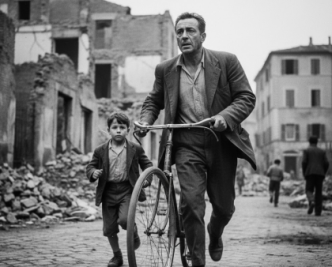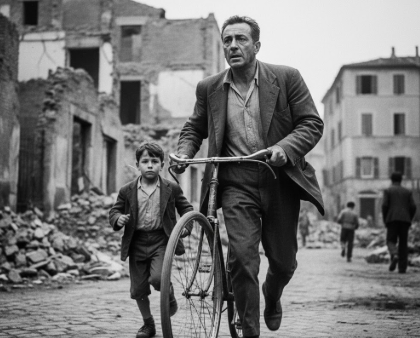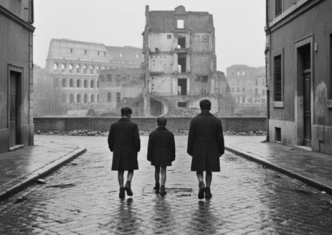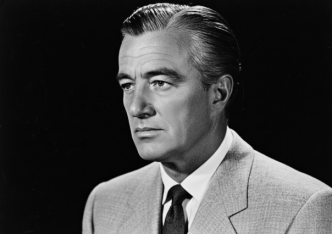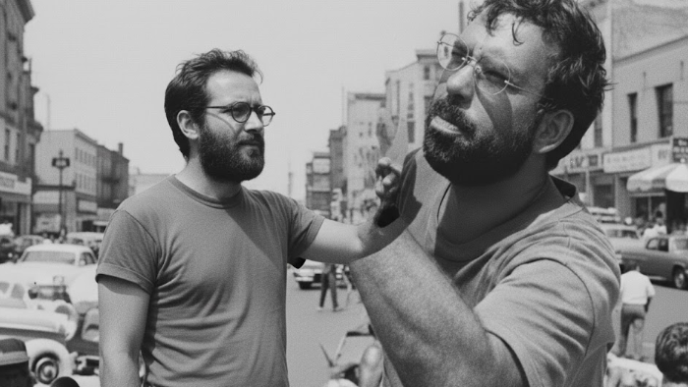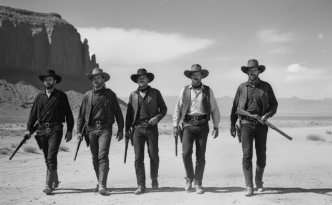In the immediate aftermath of World War II, as Italy lay in social and economic ruin, a new kind of cinema rose from the rubble. This was Italian Neorealism, a short-lived but profoundly influential movement that rejected the glossy, propagandistic films of the Fascist era and turned its camera to the harsh realities of everyday life. Led by a generation of filmmakers including Roberto Rossellini, Vittorio De Sica, and Luchino Visconti, Neorealism was born from both artistic conviction and practical necessity.
With studios like Cinecittà damaged and resources scarce, these directors took to the war-torn streets, casting non-professional actors and using natural light to tell stories of the poor and the working class with a raw, documentary-like honesty. It was a cinema of survival, a moral and ethical philosophy that sought to capture the truth of the human condition and, in doing so, created one of the most important movements in film history.
A Reaction Against the “White Telephone”
During Benito Mussolini’s fascist regime, the Italian film industry was dominated by lavish, studio-bound productions known as “white telephone” films. These were escapist comedies and melodramas set in opulent, decadent interiors, completely detached from the lives of ordinary Italians. Neorealism was a direct and forceful rebellion against this artifice. As early as 1935, critics and filmmakers had called for a cinema that would “go into the streets, into the barracks, into the train stations” to find its stories. With the fall of Mussolini in 1943 and the end of the war, filmmakers were finally freed from Fascist censorship and could confront the social, political, and economic devastation that had been ignored for two decades.
The Aesthetics of Necessity
The defining characteristics of Italian Neorealism were shaped as much by a lack of resources as by artistic choice. The movement’s core tenets included:
- On-Location Shooting: With the major film studios damaged or inaccessible, directors shot their films in the actual streets, apartments, and rural landscapes of post-war Italy, creating a powerful sense of place and authenticity. The rubble-strewn cities became not just a backdrop, but a poetic representation of the characters’ psychological trauma and struggle.
- Use of Non-Professional Actors: Neorealist filmmakers frequently cast ordinary people—factory workers, fishermen, and children—in central roles. This practice lent a raw, unpolished naturalism to the performances, blurring the line between acting and reality. Lamberto Maggiorani, the star of Bicycle Thieves, was a factory worker with no acting experience.
- Focus on the Working Class: The stories of Neorealism were the stories of the impoverished and the marginalized. The films explored themes of poverty, unemployment, social injustice, and the daily struggle for human dignity in a society grappling with moral and economic collapse.
- A Documentary-Like Style: Influenced by documentary filmmaking, Neorealism favored a minimalist aesthetic. Directors used natural, available light, long takes, and unobtrusive camera work to create a sense of realism and immediacy. The narratives were often episodic and open-ended, reflecting the uncertainty and unpredictability of real life.
Landmarks of the Movement
Though the movement was informal, a few key films and directors defined its trajectory. Luchino Visconti’s Ossessione (1943), a gritty adaptation of the American noir novel The Postman Always Rings Twice, is often considered the first Neorealist film for its raw depiction of passion and poverty, which was promptly banned by the Fascist authorities.
However, it was Roberto Rossellini’s Rome, Open City (1945) that brought the movement to international prominence. Shot on the streets of Rome just months after the Nazi occupation ended, the film is a harrowing, urgent drama about the Italian Resistance, blending melodrama with a startlingly real depiction of wartime brutality.
Perhaps the most iconic film of the movement is Vittorio De Sica’s Bicycle Thieves (1948). A simple, devastating story about a poor man searching for his stolen bicycle—the key to his family’s survival—the film is a masterpiece of humanist cinema. With its non-professional cast and its focus on a small, personal tragedy that reflects a larger societal crisis, it has the power of a universal parable.
A Global Legacy
Italian Neorealism was a short-lived trend, largely over by the mid-1950s as Italy’s economy began to recover and audiences gravitated toward more optimistic films. However, its influence was immense and lasting. The movement’s commitment to realism, its low-budget, independent spirit, and its focus on personal, socially-conscious storytelling directly inspired the French New Wave. Filmmakers like Jean-Luc Godard and François Truffaut saw in Neorealism a model for a cinema that could be made outside the studio system, one that was authentic, personal, and deeply engaged with the contemporary world. This legacy of liberation continues to influence independent filmmakers across the globe to this day

Dario Loce is the founder and editor of Celebrimous. He is a lifelong film enthusiast and the author of several locally-published books on cinema history and analysis. His passion is deconstructing the “how” and “why” of filmmaking, from the director’s vision to the editor’s cut. When not lost in a classic film, he’s usually walking through the city, replaying scenes in his mind like unfinished stories.
